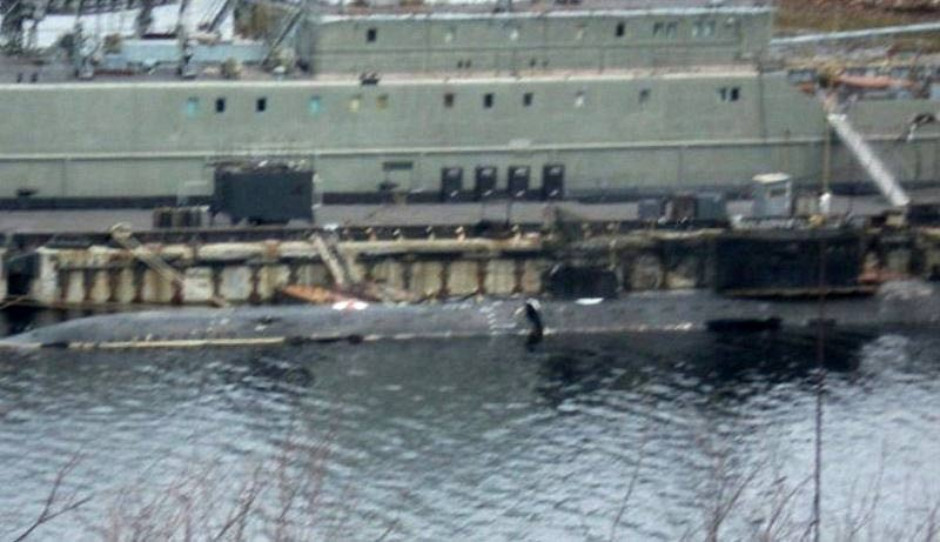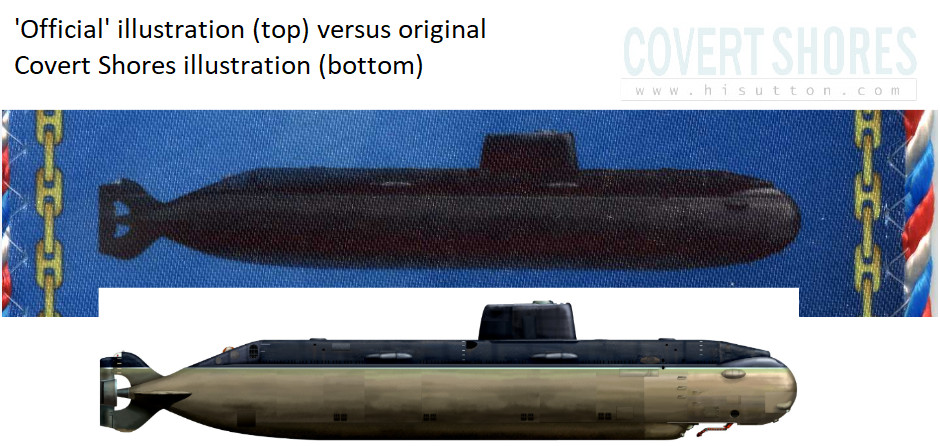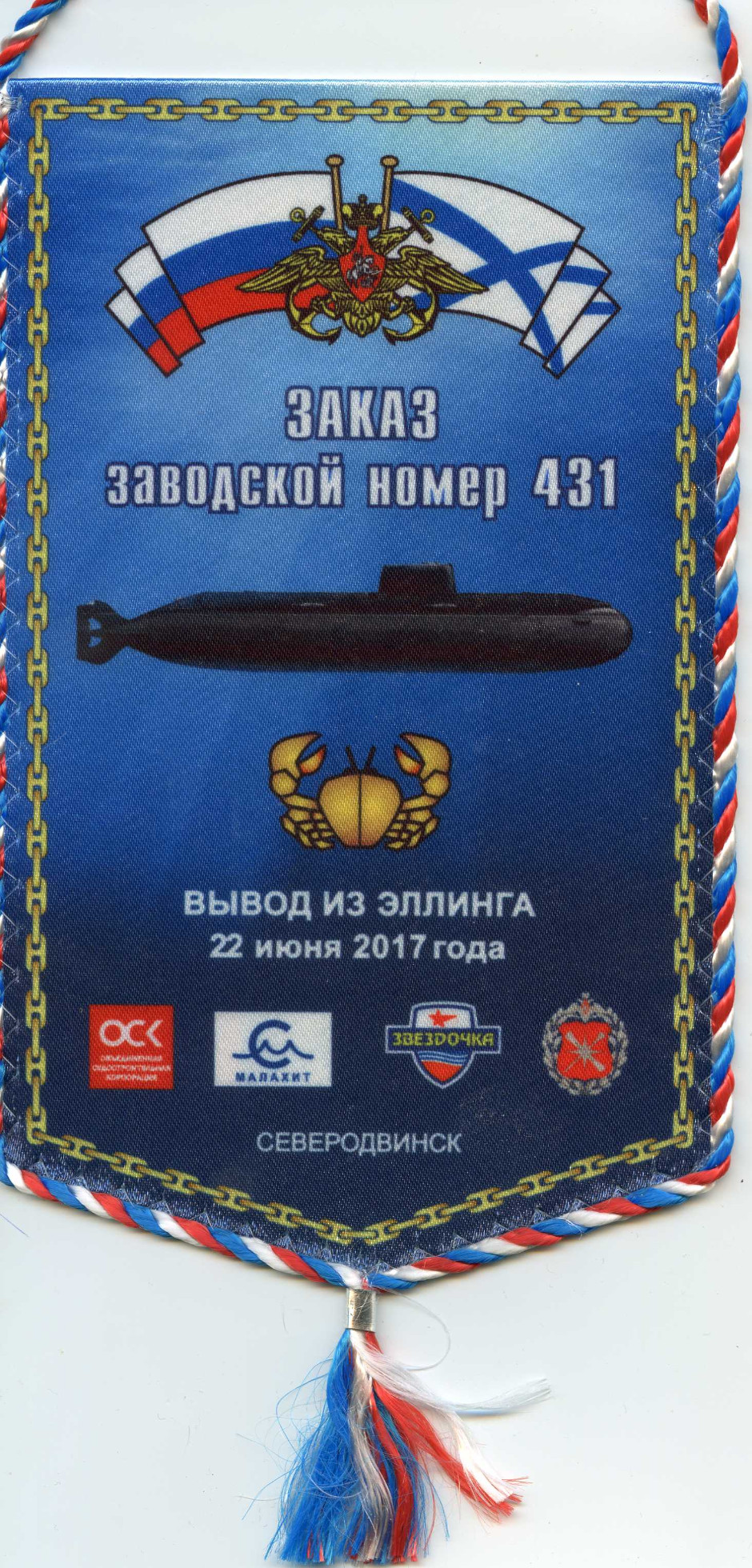 Sincere thanks to everybody who has helped with the research for this article.
Sincere thanks to everybody who has helped with the research for this article.
Danger of circular references in OSINT
 Official commemorative pendants depicting Russian spy submarines are a goldmine for Open Source Intelligence (OSINT) analysts. The aim of Open Source Intelligence (OSINT) is to gain insights into the activities, capabilities and intentions of {insert government or non-state organization} using publicly available information. So in the case of the secretive world of Russian submarine programs this includes trawling through documents and web chatter related to the shipyards and design bureaus associated with them. Often pendants, posters and medals reveal or confirm some small details about the submarines in question.
Official commemorative pendants depicting Russian spy submarines are a goldmine for Open Source Intelligence (OSINT) analysts. The aim of Open Source Intelligence (OSINT) is to gain insights into the activities, capabilities and intentions of {insert government or non-state organization} using publicly available information. So in the case of the secretive world of Russian submarine programs this includes trawling through documents and web chatter related to the shipyards and design bureaus associated with them. Often pendants, posters and medals reveal or confirm some small details about the submarines in question.
However, things are not always what they seem.
One of the dangers that accompanies being one of a handful of people in the West writing about this topic is that sometimes you end up being a reference source not just to outside observers, but to the ‘target’ themselves: sometimes the watched are using your own analysis as their source. It’s a circular reference.
The Russian state-owned United Shipbuilding Corporation (Объединённая судостроительная корпорация – OSK), which owns most military shipyards and design bureaus in the country, used an original Covert Shores illustration in their official materials to represent a special mission submarine:
The submarine depicted is the Project 18510 "Nelma" AC-23 (NATO: XRAY Class) which is a deep diving midget submarine similar in concept to the US Navy's now-retired NR-1.
The text says:
Order
Factory Number 431
Roll-out from covered way
22 June 2017
Severodvinsk
The four logos are, left to right:
1. United Shipbuilding Corporation (OSK) (Website)
2. Malakhit design bureau (Website - Russian language page as more info)
3. Zvezdochka Shipyard (repair facility) (Website)
4. Russian Ministary of Defense (MoD)
However, factory project 431 relates to a different submarine, albeit one very closely related to AC-23; Project 1851.1 AC-35. This later boat is slightly longer and has a square-cut sail, plus other minor refinements. So they used an illustration of the wrong submarine, but one so similar that even they might not notice the difference.
The crab emblem represents the secretive Main Directorate of Deep-Sea Research (Military Unit 40056, known by the initials GUGI). In essence, this means diving and ocean engineering activities related to spy submarines.

One of the very few photos of a Project 1851.1 boat, either AC-35 or AC-21. This was taken at the secretive GUGI submarine base at Olenya Guba near rhe Kola Peninsula.
THE book on Special Forces subs Covert Shores 2nd Edition. A world history of naval Special Forces, their missions and their specialist vehicles. SEALs, SBS, COMSUBIN, Sh-13, Spetsnaz, Kampfschwimmers, Commando Hubert, 4RR and many more.
Check it out on Amazon
The illustration is indisputably from Covert Shores, except that the most sensitive area has been sanitized:

It may be laziness, but it is still quite flattering. Thank you.
From XKCD:

Related articles (Full index of popular Covert Shores articles)

 Russian X-RAY Class spy sub
Russian X-RAY Class spy sub

 Russian Losharik spy sub
Russian Losharik spy sub

 Project 1910 UNIFORM Class deep diving spy sub
Project 1910 UNIFORM Class deep diving spy sub

 BS-64 Podmoskovye Special Mission (spy) Host Submarine
BS-64 Podmoskovye Special Mission (spy) Host Submarine

 Project 09852 Belgorod Special Mission submarine (spy sub)
Project 09852 Belgorod Special Mission submarine (spy sub)

 P.09851 KHABAROVSK and KANYON (Status-6)
P.09851 KHABAROVSK and KANYON (Status-6)

 Russian unbuilt spy submarine MPS
Russian unbuilt spy submarine MPS

 USS Parche spy sub par-excellence
USS Parche spy sub par-excellence

 USS Halibut
USS Halibut

 USS Seawolf (SSN-575)
USS Seawolf (SSN-575)


 Analysis of Swedish submarine incursion- Luleå 1983
Analysis of Swedish submarine incursion- Luleå 1983

 Yantar spy ship loitering over undersea cables
Yantar spy ship loitering over undersea cables
 Russia seeks submarine advantage in Arctic (SHELF system, GUGI special mission subs)
Russia seeks submarine advantage in Arctic (SHELF system, GUGI special mission subs)



